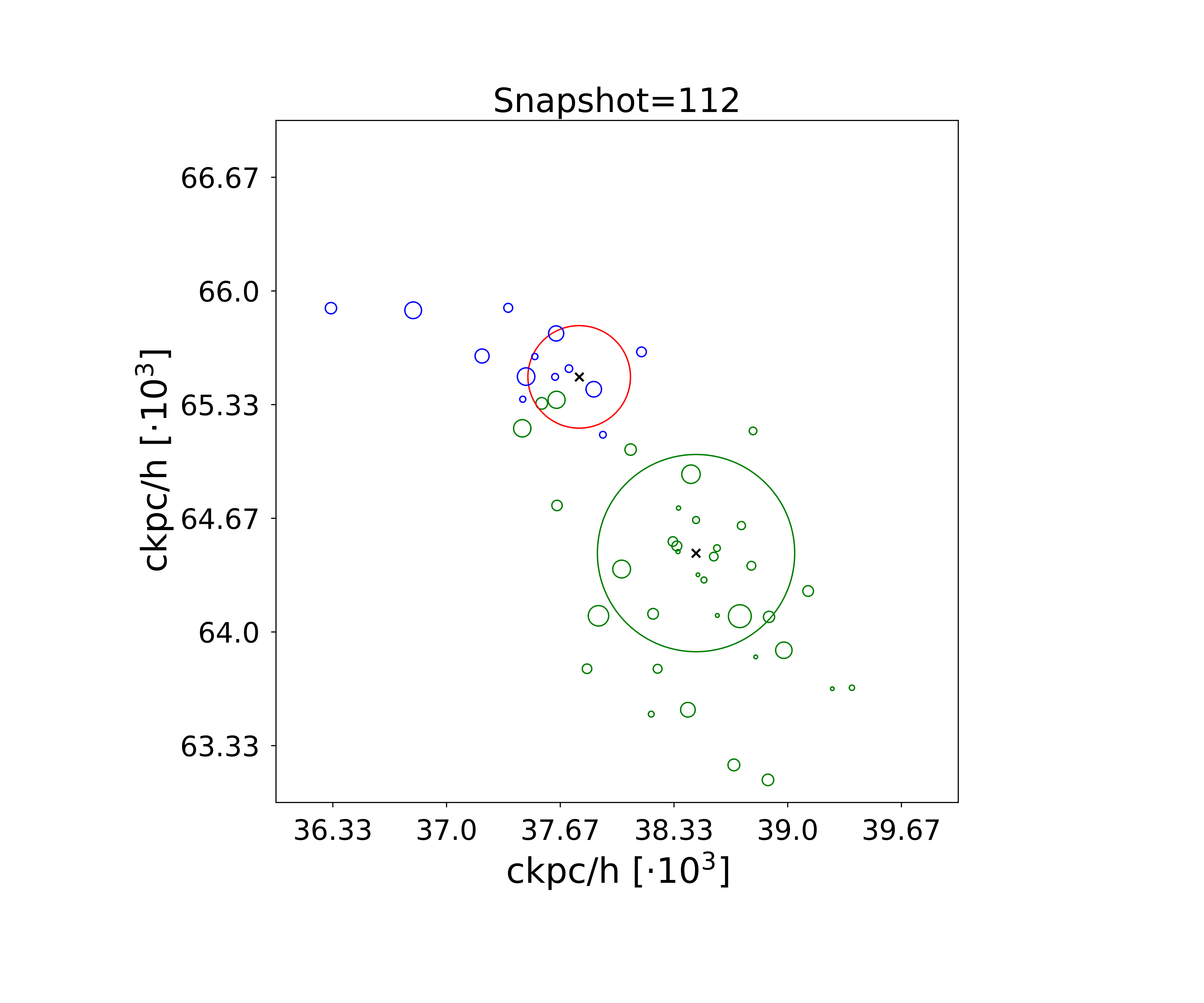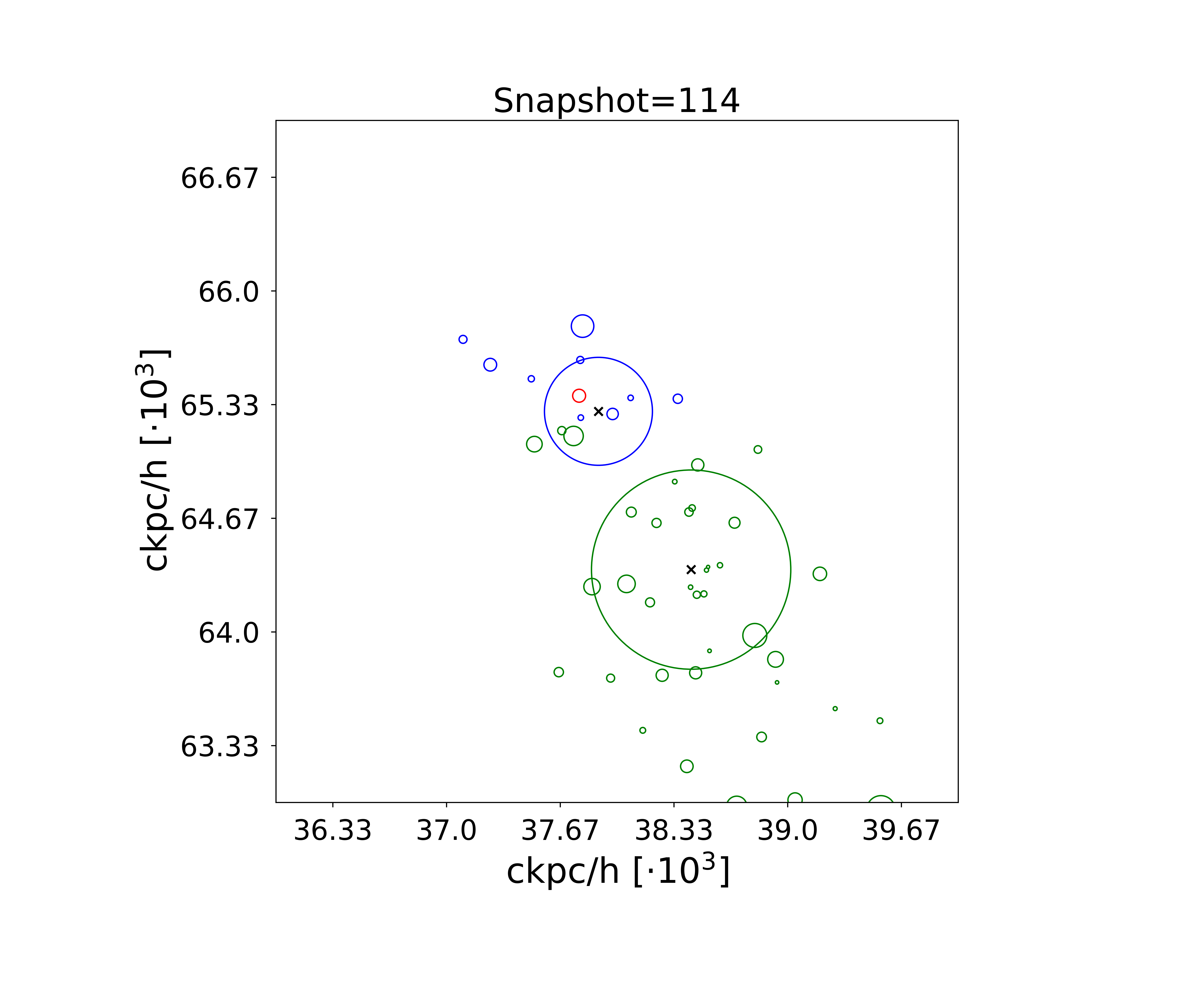I have a merger tree of one galaxy, and I drew it to show its halo environment and closing halo with whom it will merge. But I have some problems that I think is due to subhalo switching. Is it possible that switching persist in more then one consequent snapshot? I have a galaxy which have what I think is three consequent frame of subhalo switching. Is that possible?
This is one of the snapshots pre-switching (I think) - red galaxy is the one I'm interested in - it's big in first plot, and small in second (radii in the plots are half mass radii of the subhaloes):
And this is one of the three switched frames:
Is it possible to confirm switching in some way? And determine with which subhalo our galaxy switched?
Dylan Nelson
18 Jan '24
The "subhalo switching problem" is described in various papers, notably in the Rodriguez-Gomez+15 paper on SubLink.
There is no trivial solution, except to detect such switches and e.g. (i) skip over them, or (ii) interpolate values across these snapshots.
You could certainly figure out with which subhalo the switch occurred. However, the properties of the subhalo(s) are compromised, since they are measured by Subfind, and switching typically occurs as a central becomes a satellite and vice versa. As a result, the Subfind measured properties (such as masses) are not reliable. However, if you were e.g. measuring your own properties within small apertures e.g. stellar mass within 30pkpc, then you could indeed correctly measure the value at the switched snapshot.
Hello!
I have a merger tree of one galaxy, and I drew it to show its halo environment and closing halo with whom it will merge. But I have some problems that I think is due to subhalo switching. Is it possible that switching persist in more then one consequent snapshot? I have a galaxy which have what I think is three consequent frame of subhalo switching. Is that possible?
This is one of the snapshots pre-switching (I think) - red galaxy is the one I'm interested in - it's big in first plot, and small in second (radii in the plots are half mass radii of the subhaloes):

And this is one of the three switched frames:

Is it possible to confirm switching in some way? And determine with which subhalo our galaxy switched?
The "subhalo switching problem" is described in various papers, notably in the Rodriguez-Gomez+15 paper on SubLink.
There is no trivial solution, except to detect such switches and e.g. (i) skip over them, or (ii) interpolate values across these snapshots.
You could certainly figure out with which subhalo the switch occurred. However, the properties of the subhalo(s) are compromised, since they are measured by Subfind, and switching typically occurs as a central becomes a satellite and vice versa. As a result, the Subfind measured properties (such as masses) are not reliable. However, if you were e.g. measuring your own properties within small apertures e.g. stellar mass within 30pkpc, then you could indeed correctly measure the value at the switched snapshot.